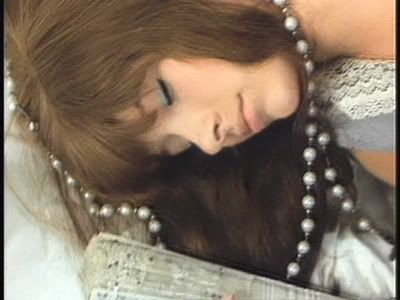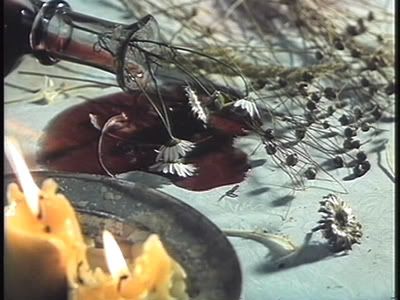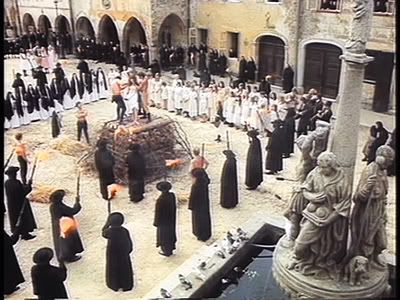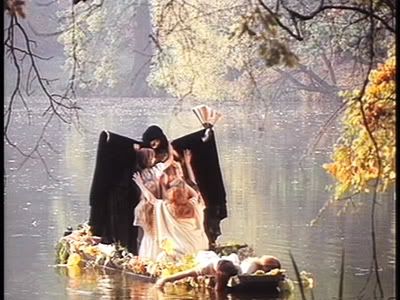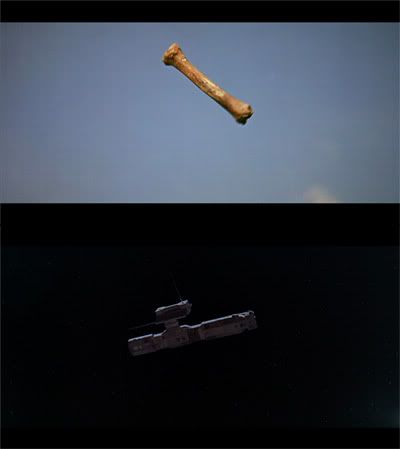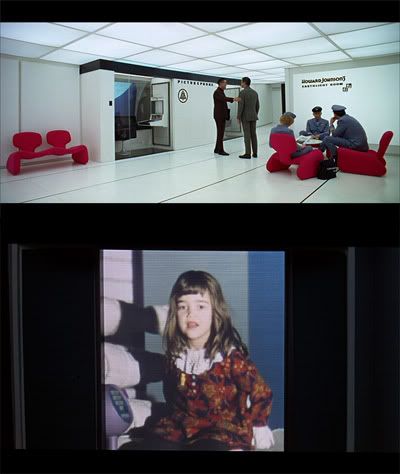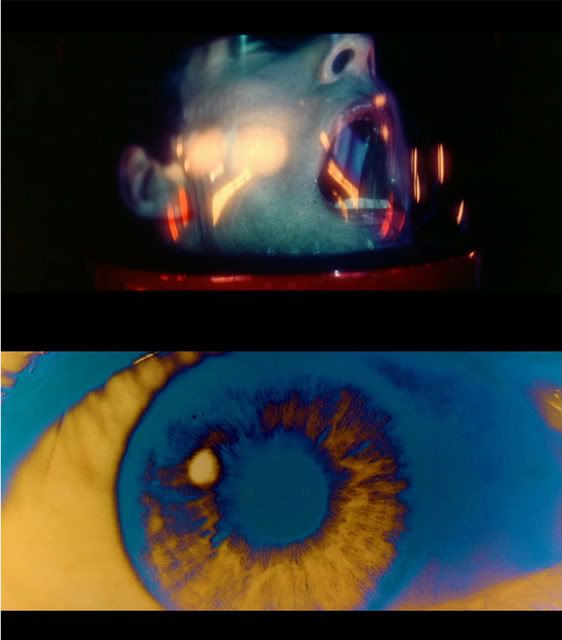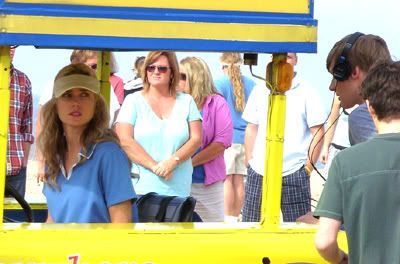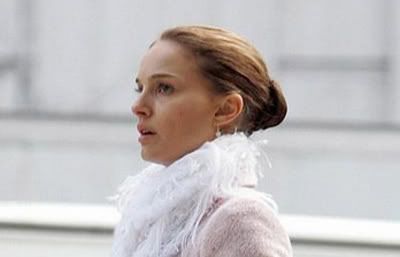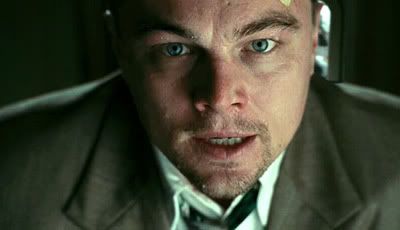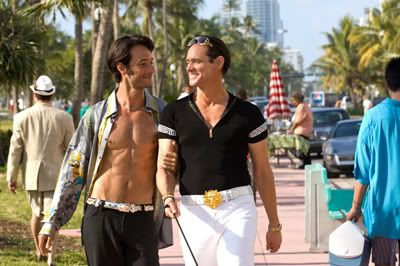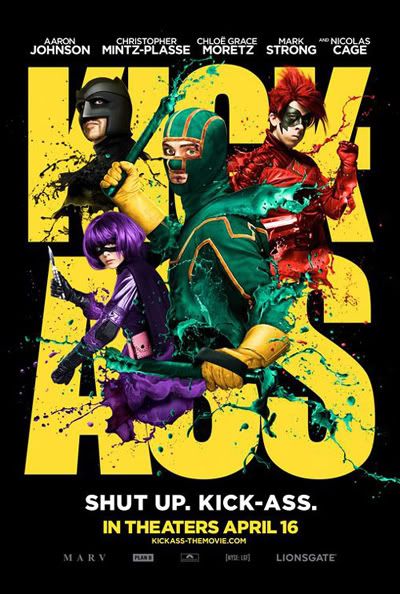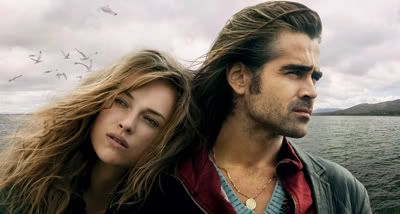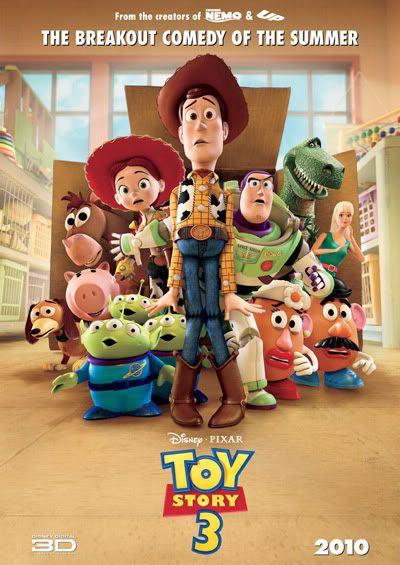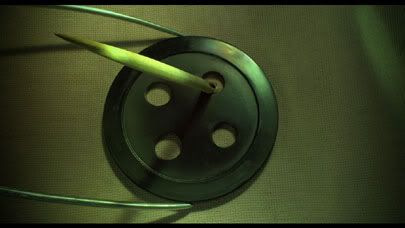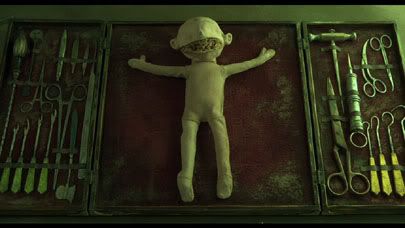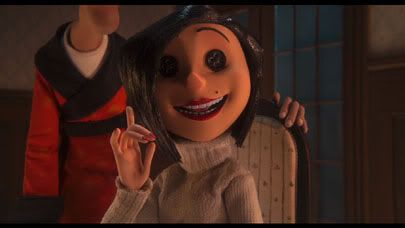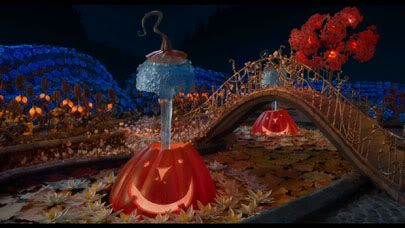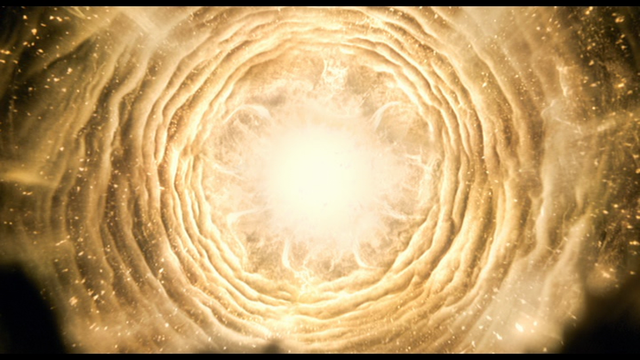Wednesday, 31 March 2010
Valerie and her Week of Wonders: The Call of the Weird
This review contains spoilers, beware!
Before Valerie and her Week of Wonders, I thought I was pretty much desensitized to weirdness. I had watched works of cinematic surrealism from The Cabinet of Dr Calagari to Mulholland Drive. I also had a liking for all breeds of anime, ranging from the relatively coherent (Spirited Away, Millennium Actress) to the mystifying (The End of Evangelion). But now I’ve watched Valerie, all of the afore-mentioned seem like models of sanity.
Valerie is a mad, beautiful film. One of its most disconcerting features is lack of coherency. Although the heroine (the titular Valerie) is assaulted or endangered continuously, she remains absolutely calm throughout. She does not react or display clear emotions; instead she wafts through a variety of beautiful set pieces, gazing levelly at the world around her as if she’s wandering through an art gallery.
The story of Valerie is deliberately obscure, and aspects of it that seen fixed are repeatedly undermined. The film starts simply with the theft of Valerie’s pearl earrings by a young man called Orlik (which translates as ‘Eagle’), but quickly descends into chaos. Immediately after her first menstruation, Valerie enters a world of Gothic-inspired horror where sexually licentious priests lecture virgins on morality and chalk faced vampires openly search the streets for prey.
Valerie was directed by Jaromil Jires, and was released in Czechoslovakia in 1970, when the country was still under Communist control. The film displays a deep distrust of authority figures, condemning the hypocrisy of the priesthood and emphasising the rampant sexuality barely hidden by the staid, corpse-like appearance of Valerie’s grandmother.
Jires’ film is steeped in symbolism, and for the most part Valerie is more memorable when considered as a series of striking images rather than a narrative. The cinematography is stunning, featuring bold, vibrant colours and hazy photography that generates a dream-like ambience.
This impression of unreality is also reinforced by the film’s strange use of characterization. The actress who plays Valerie’s grandmother plays two other roles; her younger, vampiric self and Valerie’s long-lost mother. Orlik - her protector and potential lover - is indicated to be her secret half brother, although this suggestion has no bearing on the rest of the film. A deep sense of uncertainty undercuts Valerie, and the film effectively embodies the disorder of the young girl’s mind.
The film ends by banishing the horror and morbidity that undercut most of the film, gathering together its characters for a final orgy of celebration. This sequence shows the repressed, hypocritical characters of the film (such as priests and nuns), interacting harmoniously with the ‘good’ characters such as Valerie and Orlik. David Melville refers to this as a “sophisticated blending” of light and darkness, and it is indeed interesting that Jires chose to end Valerie on such an optimistic note after its relentless displays of cruelty and hypocrisy.
Although Valerie is a beautiful and thoughtfully constructed film, the absence of narrative stability unsettled me. It is certainly a memorable piece of filmmaking, but I have yet to decide if it was memorable in a good way.
I probably need more exposure to the ‘weird’ before I try and tackle it again. Maybe a dose of Svankmajer is called for?
1. Melville, David. The Eccentric Carnival: Valerie and Her Week of Wonders. Senses of Cinema.31 March 2010.
Monday, 29 March 2010
Kubrick: Through a Glass, Darkly
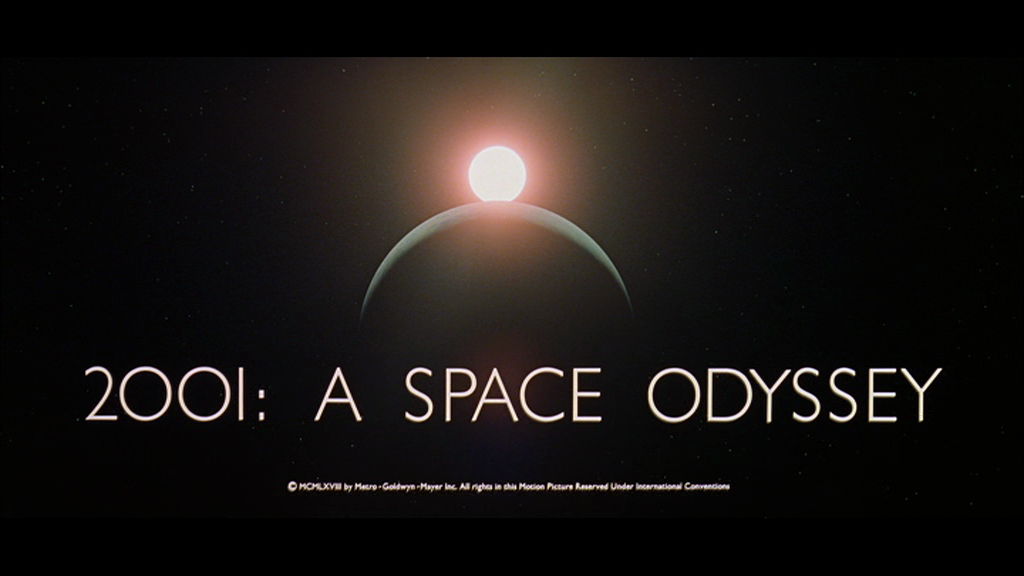
This is an edited version of an essay written early this year. It's very long, so I will post the second part at a later date along with a bibliography.
In his famous essay ‘Art as Technique’, Victor Shklovsky proposes that ‘art exists that one may recover the sensation of life, it exists to make one feel things’ (16). This concept of art’s purpose is considered crucial, as Shklovsky has already described the increasingly ‘automatic’ nature of both language and perception (15). Formalists such as Shklovsky considered defamiliarizing techniques – the ability to make the familiar strange - in writing as a crucial means of combating this decline, and their ideas continue to be applicable to art across many mediums. Stanley Kubrick’s 2001: A Space Odyssey uses space as a backdrop against which aspects of our earthly existence are isolated and open to re-evaluation. One of its main pre-occupations is the question of how ‘human nature’ will alter in the future, expressing both scepticism and hope about man’s ability to retain his humanity in a world increasingly dominated by technology.
Kubrick’s film - while perhaps most remembered for its immaculate, clinical sets - begins with a completely different aesthetic. The ‘Dawn of Man’ sequence that begins the film simulates the natural landscape with a sense of awe and wonder, depicting the beauty of many disparate aspects of nature (an orange sky at sunset, a leopard with glowing eyes reclining next to its kill) with equal reverence. The match-cut from bone to space-ship that compresses a few million years of history into a fraction of a second marks a shift in the films’ focus from the natural world to the unnatural one. From this point on, nearly all of the interior sets are flawlessly white and clean. While this clinical perfection suggests a future that is unnatural and estranged from man’s origins, the photography of the sets nonetheless showcases them as examples of man’s capabilities. In a similar vein, the juxtaposition of footage of the space-ships drifting through the vacuum of space with classical music generates an air of pomp and grandeur, an atmosphere that contrasts sharply with what Piers Bizony refers to as ‘redundant’ dialogue scenes (16). The white sets act as plain backdrops against which traces of colour - the air stewardess’s pink uniforms, the red chairs in the lobby of the space hotel, the artificial food – seem shocking and garish.
Another contrast that arises from the film’s use of colour can be seen in the scenes that depict contact between the people in space and their families back on earth. When Floyd wishes his daughter happy birthday over a monitor, she is shown in a frilled, boldly patterned dress that clashes harshly with the sleek, monochromatic costumes worn by the space travellers. Similarly, the bright smiles and traditional clothing of Poole’s parents (who, in an interesting parallel to Floyd's scene with his daughter, are wishing him happy birthday from earth) make them seem like out-dated objects of ridicule, an impression reinforced by their son’s cold disinterest in their message.
The film places significant emphasis on the most mundane elements of everyday life, speculating about how they will have altered in the future. Footage of apes consuming raw, bloodied meat at the beginning of the film are paralleled by scenes that show people drinking their artificially coloured dinner through straws, and long periods of meditative silence are set against ones of empty, automatic chatter. In many ways, the film functions as a satire, with Philip Mather describing the irony of Floyd’s acting like a ‘bored businessman’ when surrounded by, what are for the audience, views of incredible, awe inspiring beauty (199). The resonance of such satire is reinforced by the film’s commitment to accuracy. Kubrick’s use of contrast and satire contrast are central to its thematic development, as Marcia Landy describes:
If ‘The Dawn of Man’ episode highlighted the solidity of the terrestrial terrain ... what is evident in [the untitled, middle segment of the film] is a loss of contact with the landscape and with the body expressed in the unsteady movement of humans and the restraints of communicability (92)
This estrangement of man from his origins is perhaps indicated most strongly by the aesthetics of the stargate sequence that comes towards the end of the film. Astronaut Dave Bowman’s horrified, pain-contorted face flashes on the screen in the midst of a bombardment of vividly coloured lights. In contrast to the more sedate pace of what has come previously, the lights displayed in the stargate sequence move with disorientating rapidity. There has been a change from a slow, careful pace to one of urgency. This frenzy of movement and colour is contrasted with the use of still reaction shots of Bowman’s face; ironically, at the time when he shows the most emotion he is denied expression through movement. The astronaut becomes a subliminal figure, a brief snapshot whose appearances are too sudden to be substantial. This reduction of Bowman’s role leaves the viewer to experience the sequence directly; they are denied the presence of a referential figure to direct their response. Mather describes the stargate sequence as an attempt to go ‘beyond the anthropomorphic limits of our imagination ... [and] represent the truly alien’, a fitting description that takes into account the almost complete lack of human presence in the scene (187).
The defamiliarizing effect of the stargate sequence is intensified by the shots of artificially coloured landscapes that follow it. The choice of footage parallels that which appears at the beginning of the film in that both show natural landscapes: mountains, seas and deserts. Yet the carefully considered framing and slow pace of the images featured in the ‘Dawn of Man’ sequence at the start of the film is exchanged for sweeping, high angle shots of the landscape that move at a relentless pace. The footage was subject to intense treatment in post-production – the shots appear in a variety of divergent, heavily saturated colours – which recreates the natural world as a bewildering, nightmarish presence that Bowman cannot look away from. The landscape footage is interspersed with extreme-close ups of Bowman’s eye as his pupil dilates and contracts, a choice of image that Mather suggests ‘emphasize[s] his status not only as the “looking subject” but also as victim’ (192). The claustrophobia and totality of experience implied by the intimate proximity of the shot can also extend to the viewer; the eye is isolated to such an extent that it becomes a symbol of the general viewing experience as much as it does of Bowman’s specifically. The astronaut’s eye functions as a stand-in for the viewer’s, representing the defamiliarizing effect of the film’s climatic scenes through its own radically altered state.
Essentially, defamiliarizing imagery is used in 2001 to jerk the viewer from a state of complacency, with garish colours and recurring imagery being used to make the viewer engage critically with the material being displayed. While the film places significant emphasis on the beauty and wonder of man’s technical capabilities, it also reminds the viewer of the necessity of remembering our origins.
Sunday, 28 March 2010
The Top Ten of 2010
Here are the up-and-coming films I’m excited about. This is obviously several months too late, by they do say better late than never, right?
What are you looking forward to?
10. What’s Wrong With Virginia?
Director: Dustin Lance Black
Cast: Jennifer Connelly, Ed Harris, Harrison Gilbertson, Emma Roberts, Amy Madigan.
Due: Autumn 2010? Possible Cannes contender.
Synopsis: Virginia is a charming, vibrant, and completely psychologically disturbed mother of Emmett, the sweetest illegitimate 16-year-old boy a mom could ask for. She has been entangled in a secret 20-year love affair with Richard Tipton, a highly visible, local Mormon Sheriff running for a seat on the state senate. Both Virginia and Tipton have their own pasts to protect, a situation that quickly escalates when Emmett becomes focused on a romantic relationship with Tipton's daughter, Jessie.
What’s going to make it good? This is Dustin Lance Black’s (writer of Milk) first foray into feature film directing, which features Jennifer Connelly as the mentally unbalanced Virginia of the title and Ed Harris as the mormon police-chief-turned-politician with whom she’s been having a twenty year long affair.
If nothing else, it will be fun to see Connelly play a blonde. After all, they have more fun, right?
9. Black Swan
Director: Darren Aronofsky
Cast: Natalie Portman, Mila Kunis, Winona Ryder, Vincent Cassel.
Due: Autumn 2010
Synopsis: Black Swan tells the story of a veteran ballerina (Portman) who finds herself locked in a competitive situation with a rival dancer, with the stakes and twists increasing as the dancers approach a big performance. But it’s unclear whether the rival is a supernatural apparition or if the protagonist is simply having delusions.
What’s going to make it good? Darren Aronofsky + Natalie Portman + Feuding Ballerinas = what more could you want?
I’m excited for this by default, namely due to my blind love of The Fountain and The Red Shoes (the best ballet flick of them all).
8. The Tree of Life
Director: Terence Malick
Cast: Brad Pitt, Sean Penn, Joanna Going, Fiona Shaw.
Due: November 2010, possible premiere at Cannes.
Synopsis: Tree of Life is a period piece centered around three boys in the 1950s. The eldest son of two characters (Brad Pitt and Jessica Chastain) witnesses the loss of innocence.
We trace the evolution of an eleven-year-old boy in the Midwest, Jack, one of three brothers. At first all seems marvelous to the child. He sees as his mother does, with the eyes of his soul. She represents the way of love and mercy, where the father tries to teach his son the world's way, of putting oneself first. Each parent contends for his allegiance, and Jack must reconcile their claims. The picture darkens as he has his first glimpses of sickness, suffering and death. The world, once a thing of glory, becomes a labyrinth.
What’s going to make it good? Although Days of Heaven (1978) failed to engage my interest, I did appreciate its beauty. This is Malick’s first new release in five years, and tells the story of three boys growing up the fifties. Should be a treat for anyone who likes their films slow, contemplative and beautiful.
7. Shutter Island
Director: Martin Scorsese
Cast: Leonardo DiCaprio, Michelle Williams, Ben Kingsley.
Due: On release!
Synopsis: From Oscar-winning director Martin Scorsese, Shutter Island is the story of two U.S. marshals, Teddy Daniels (Leonardo DiCaprio) and Chuck Aule (Mark Ruffalo), who are summoned to a remote and barren island off the coast of Massachusetts to investigate the mysterious disappearance of a murderess from the island's fortress-like hospital for the criminally insane.
What’s going to make it good? If my work-load ever allows me to go to the cinema again, this is the first film I’ll see. All the reports I’ve heard on this have been extremely positive, and I feel it’s high time I saw a Scorsese film considering his track record (Taxi Driver, Goodfellas) and his excellent taste in films (one of his most admired filmmakers is Michael Powell, director of the afore-mentioned The Red Shoes).
6. I Love You, Philip Morris
Directors: Glenn Ficara and John Requa.
Cast: Jim Carrey, Ewan McGregor, Leslie Mann.
Due: On release!
Synopsis: Based on a book by Houston Chronicle crime reporter Steve McVicker, the fact-based film casts Carrey as Steven Russell, a married father whose exploits landed him in the Texas criminal justice system. He fell madly in love with his cellmate, who eventually was set free, which led Russell to escape from Texas prisons four times.
What’s going to make it good? I love you, Jim Carrey. I recently re-watched The Truman Show and saw Eternal Sunshine of the Spotless Mind, and both reinforced my conviction that he is the most skilled ‘comic’ actor in Hollywood today (you are sorely missed, Mr. Chaplin). And, besides that, the trailer had me in stitches. What’s not to like?
5. Kick Ass
Director: Matthew Vaughn
Cast: Aaron Johnson, Nicholas Cage, Chloe Moretz
Due: On release!
Synopsis: 'Kick-Ass' tells the story of average teenager Dave Lizewski, a comic-book fanboy who decides to take his obsession as inspiration to become a real-life superhero. As any good superhero would, he chooses a new name -- Kick-Ass -- assembles a suit and mask to wear, and gets to work fighting crime. There's only one problem standing in his way: Kick-Ass has absolutely no superpowers.
His life is forever changed as he inspires a subculture of copy cats, meets up with a pair of crazed vigilantes - including an 11-year-old sword-wielding dynamo, Hit Girl and her father, Big Daddy - and forges a friendship with another fledgling superhero, Red Mist. But thanks to the scheming of a local mob boss Frank D'Amico, that new alliance will be put to the test.
What’s going to make it good? Well you see, today films that prompt vitriolic outbursts from the Daily Mail are practically guaranteed to be masterpieces that show-case Tarintino-esque ultra-violence and kids that curse like pimps. Of course, it helps that the screenplay was penned by Jane Goldman, the wife of that Prince of Depravity, Jonathan Ross.
I will see this, even if I have to kick a few asses to get to the cinema.
4. Tron Legacy
Cast: Jeff Bridges, Garrett Hedlund, Olivia Wilde, Michael Sheen
Due: 26 December 2010
Synopsis: ‘Tron Legacy’ is a 3D high-tech adventure set in a digital world that’s unlike anything ever captured on the big screen. Sam Flynn, the tech-savvy 27-year-old son of Kevin Flynn, looks into his father’s disappearance and finds himself pulled into the same world of fierce programs and gladiatorial games where his father has been living for 25 years. Along with Kevin’s loyal confidant, father and son embark on a life-and-death journey across a visually-stunning cyber universe that has become far more advanced and exceedingly dangerous
What’s going to make it good? Easy answer: the special effects. I’m not easily impressed by technical wizardry but the trailers for this have an element of beauty to them. There’s a streamlined simplicity to the design here that looks incredibly refreshing after the arguably cluttered aesthetics seen in Avatar and Alice in Wonderland; essentially, it will be great to see the technology applied in a fresh way.
3. Harry Potter and the Deathly Hallows: Part I
Director: David Yates
Cast: Daniel Radcliffe, Emma Watson, Rupert Grint, Alan Rickman
Due: 19 November 2010
Synopsis: It's Harry Potter, okay? Wikipedia!
What’s going to make it good? I grew up with Potter. I was one of those kids who would fast simply to read the final five chapters of The Order of the Phoenix without stopping. I will be there out of franchise loyalty, and a need to be reminded exactly what happened in The Deathly Hallows, anyway.
2. Ondine
Director: Neil Jordan
Cast: Colin Farrel, Tony Curran, Alicja Bachleda
Due: hopefully some time in this decade.
Synopsis: Ondine is a lyrical, modern fairy tale that tells the story of Syracuse, an Irish fisherman whose life is transformed when he catches a beautiful and mysterious woman in his nets. His daughter Annie comes to believe that the woman is a magical creature, while Syracuse falls helplessly in love. However, like all fairy tales, enchantment and darkness go hand in hand.
What’s going to make it good? Neil Jordan. I've recently studied The Company of Wolves, and studying a film can either increase my admiration for it or make me despite it to the point where I would happily burn every copy in existence. Thankfully, Company falls into the former catergory. I've always loved fairy-tales and myths, and this looks like a great take on a classic tale.
Why oh why won't it come to my city NOW?
1. Toy Story 3
Director: Lee Unkrich
Cast: Tom Hanks, Time Allen, Michael Keaton, Joan Cusack
Due: 23 July 2010
Synopsis: Woody and Buzz had accepted that their owner Andy would grow up someday, but what happens when that day arrives? In the third installment, Andy is preparing to depart for college, leaving his loyal toys troubled about their uncertain future.
What’s going to make it good? It's Pixar. It's a sequel to Toy Story 2. It has a brilliant trailer that shows the origins of the immortal Ken and Barbie love story.
You'd have to be insane NOT to be excited for this.
What are you looking forward to?
10. What’s Wrong With Virginia?
Jennifer Connelly and Dustin Lance Black discussing a scene during production.
Director: Dustin Lance Black
Cast: Jennifer Connelly, Ed Harris, Harrison Gilbertson, Emma Roberts, Amy Madigan.
Due: Autumn 2010? Possible Cannes contender.
Synopsis: Virginia is a charming, vibrant, and completely psychologically disturbed mother of Emmett, the sweetest illegitimate 16-year-old boy a mom could ask for. She has been entangled in a secret 20-year love affair with Richard Tipton, a highly visible, local Mormon Sheriff running for a seat on the state senate. Both Virginia and Tipton have their own pasts to protect, a situation that quickly escalates when Emmett becomes focused on a romantic relationship with Tipton's daughter, Jessie.
What’s going to make it good? This is Dustin Lance Black’s (writer of Milk) first foray into feature film directing, which features Jennifer Connelly as the mentally unbalanced Virginia of the title and Ed Harris as the mormon police-chief-turned-politician with whom she’s been having a twenty year long affair.
If nothing else, it will be fun to see Connelly play a blonde. After all, they have more fun, right?
9. Black Swan
Natalie Portman filming in New York.
Director: Darren Aronofsky
Cast: Natalie Portman, Mila Kunis, Winona Ryder, Vincent Cassel.
Due: Autumn 2010
Synopsis: Black Swan tells the story of a veteran ballerina (Portman) who finds herself locked in a competitive situation with a rival dancer, with the stakes and twists increasing as the dancers approach a big performance. But it’s unclear whether the rival is a supernatural apparition or if the protagonist is simply having delusions.
What’s going to make it good? Darren Aronofsky + Natalie Portman + Feuding Ballerinas = what more could you want?
I’m excited for this by default, namely due to my blind love of The Fountain and The Red Shoes (the best ballet flick of them all).
8. The Tree of Life
Brad Pitt in a production still.
Director: Terence Malick
Cast: Brad Pitt, Sean Penn, Joanna Going, Fiona Shaw.
Due: November 2010, possible premiere at Cannes.
Synopsis: Tree of Life is a period piece centered around three boys in the 1950s. The eldest son of two characters (Brad Pitt and Jessica Chastain) witnesses the loss of innocence.
We trace the evolution of an eleven-year-old boy in the Midwest, Jack, one of three brothers. At first all seems marvelous to the child. He sees as his mother does, with the eyes of his soul. She represents the way of love and mercy, where the father tries to teach his son the world's way, of putting oneself first. Each parent contends for his allegiance, and Jack must reconcile their claims. The picture darkens as he has his first glimpses of sickness, suffering and death. The world, once a thing of glory, becomes a labyrinth.
What’s going to make it good? Although Days of Heaven (1978) failed to engage my interest, I did appreciate its beauty. This is Malick’s first new release in five years, and tells the story of three boys growing up the fifties. Should be a treat for anyone who likes their films slow, contemplative and beautiful.
7. Shutter Island
Leonardo DiCaprio in Shutter Island.
Director: Martin Scorsese
Cast: Leonardo DiCaprio, Michelle Williams, Ben Kingsley.
Due: On release!
Synopsis: From Oscar-winning director Martin Scorsese, Shutter Island is the story of two U.S. marshals, Teddy Daniels (Leonardo DiCaprio) and Chuck Aule (Mark Ruffalo), who are summoned to a remote and barren island off the coast of Massachusetts to investigate the mysterious disappearance of a murderess from the island's fortress-like hospital for the criminally insane.
What’s going to make it good? If my work-load ever allows me to go to the cinema again, this is the first film I’ll see. All the reports I’ve heard on this have been extremely positive, and I feel it’s high time I saw a Scorsese film considering his track record (Taxi Driver, Goodfellas) and his excellent taste in films (one of his most admired filmmakers is Michael Powell, director of the afore-mentioned The Red Shoes).
6. I Love You, Philip Morris
Jim Carrey in a production still.
Directors: Glenn Ficara and John Requa.
Cast: Jim Carrey, Ewan McGregor, Leslie Mann.
Due: On release!
Synopsis: Based on a book by Houston Chronicle crime reporter Steve McVicker, the fact-based film casts Carrey as Steven Russell, a married father whose exploits landed him in the Texas criminal justice system. He fell madly in love with his cellmate, who eventually was set free, which led Russell to escape from Texas prisons four times.
What’s going to make it good? I love you, Jim Carrey. I recently re-watched The Truman Show and saw Eternal Sunshine of the Spotless Mind, and both reinforced my conviction that he is the most skilled ‘comic’ actor in Hollywood today (you are sorely missed, Mr. Chaplin). And, besides that, the trailer had me in stitches. What’s not to like?
5. Kick Ass
Director: Matthew Vaughn
Cast: Aaron Johnson, Nicholas Cage, Chloe Moretz
Due: On release!
Synopsis: 'Kick-Ass' tells the story of average teenager Dave Lizewski, a comic-book fanboy who decides to take his obsession as inspiration to become a real-life superhero. As any good superhero would, he chooses a new name -- Kick-Ass -- assembles a suit and mask to wear, and gets to work fighting crime. There's only one problem standing in his way: Kick-Ass has absolutely no superpowers.
His life is forever changed as he inspires a subculture of copy cats, meets up with a pair of crazed vigilantes - including an 11-year-old sword-wielding dynamo, Hit Girl and her father, Big Daddy - and forges a friendship with another fledgling superhero, Red Mist. But thanks to the scheming of a local mob boss Frank D'Amico, that new alliance will be put to the test.
What’s going to make it good? Well you see, today films that prompt vitriolic outbursts from the Daily Mail are practically guaranteed to be masterpieces that show-case Tarintino-esque ultra-violence and kids that curse like pimps. Of course, it helps that the screenplay was penned by Jane Goldman, the wife of that Prince of Depravity, Jonathan Ross.
I will see this, even if I have to kick a few asses to get to the cinema.
4. Tron Legacy
Cast: Jeff Bridges, Garrett Hedlund, Olivia Wilde, Michael Sheen
Due: 26 December 2010
Synopsis: ‘Tron Legacy’ is a 3D high-tech adventure set in a digital world that’s unlike anything ever captured on the big screen. Sam Flynn, the tech-savvy 27-year-old son of Kevin Flynn, looks into his father’s disappearance and finds himself pulled into the same world of fierce programs and gladiatorial games where his father has been living for 25 years. Along with Kevin’s loyal confidant, father and son embark on a life-and-death journey across a visually-stunning cyber universe that has become far more advanced and exceedingly dangerous
What’s going to make it good? Easy answer: the special effects. I’m not easily impressed by technical wizardry but the trailers for this have an element of beauty to them. There’s a streamlined simplicity to the design here that looks incredibly refreshing after the arguably cluttered aesthetics seen in Avatar and Alice in Wonderland; essentially, it will be great to see the technology applied in a fresh way.
3. Harry Potter and the Deathly Hallows: Part I
Daniel Radcliffe filming a scene.
Director: David Yates
Cast: Daniel Radcliffe, Emma Watson, Rupert Grint, Alan Rickman
Due: 19 November 2010
Synopsis: It's Harry Potter, okay? Wikipedia!
What’s going to make it good? I grew up with Potter. I was one of those kids who would fast simply to read the final five chapters of The Order of the Phoenix without stopping. I will be there out of franchise loyalty, and a need to be reminded exactly what happened in The Deathly Hallows, anyway.
2. Ondine
Colin Farrel with Alicja Bachleda in a publicity still.
Director: Neil Jordan
Cast: Colin Farrel, Tony Curran, Alicja Bachleda
Due: hopefully some time in this decade.
Synopsis: Ondine is a lyrical, modern fairy tale that tells the story of Syracuse, an Irish fisherman whose life is transformed when he catches a beautiful and mysterious woman in his nets. His daughter Annie comes to believe that the woman is a magical creature, while Syracuse falls helplessly in love. However, like all fairy tales, enchantment and darkness go hand in hand.
What’s going to make it good? Neil Jordan. I've recently studied The Company of Wolves, and studying a film can either increase my admiration for it or make me despite it to the point where I would happily burn every copy in existence. Thankfully, Company falls into the former catergory. I've always loved fairy-tales and myths, and this looks like a great take on a classic tale.
Why oh why won't it come to my city NOW?
1. Toy Story 3
Director: Lee Unkrich
Cast: Tom Hanks, Time Allen, Michael Keaton, Joan Cusack
Due: 23 July 2010
Synopsis: Woody and Buzz had accepted that their owner Andy would grow up someday, but what happens when that day arrives? In the third installment, Andy is preparing to depart for college, leaving his loyal toys troubled about their uncertain future.
What’s going to make it good? It's Pixar. It's a sequel to Toy Story 2. It has a brilliant trailer that shows the origins of the immortal Ken and Barbie love story.
You'd have to be insane NOT to be excited for this.
Let the Right One In: A Vampire Film with Bite
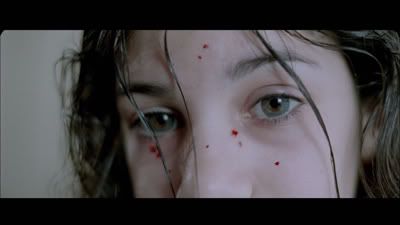
Tomas Alfredson’s Let the Right One In (Låt den rätte komma in), 2008
For the most part, Let the Right One In is a masterpiece of understatement. Whereas ‘vampire’ in Western culture has become a by-word for the angst ridden anti-heroes that populate the books of Stephanie Meyer and Anne Rice, Eli, the vampire that Tomas Alfredson’s Let the Right One In focuses on, is mercenary and unapologetic.
To further complicate things, Eli possesses the body of a twelve year old.
The film starts by detailing the plight of Oskar (Kåre Hedebrant), a pre-pubescent boy living an isolated existence in the snow bound Sweden of the early 1980s. He is victimized by his class-mates, who are confident he will keep silent despite their abuses of him. He is for the most ignored by his parents, and spends most of his time alone mulling over plans of revenge. Instead, he finds solace in Eli (Lina Leandersson) who he first sees sitting on the climbing frame outside the apartment block where he lives. Like Oskar, Eli is quiet and softly spoken and they quickly forge a bond.
Let the Right One In sets establishes a series of oppositions, the most marked being that of innocence and culpability. The innocent relationship that develops between Oskar and Eli is tested when he discovers his friend’s nature, and their relationship is re-set against a backdrop of blood, murder and revenge.
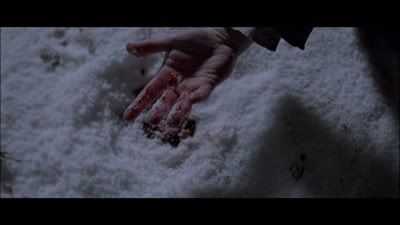
The direction displays great style and subtlety; the slow, contemplative shots of the snow entrenched landscapes the characters inhabit generate an atmosphere of stillness and mystery. A mood of strangeness and unease is also established by juxtaposing cloying pop melodies (such as ABBA-star Agnetha Fälkstog’s Försonade*) with scenes of violence and blood-lust.
The acting from both the young leads is outstanding, and both Hedebrant and Leandersson are at their most effective when they are silent and allow their faces to speak for them. It is especially to Leandersson’s credit that the physical aspects of her performance are so effective, for her voice was dubbed over by another actress.
One of the most intriguing aspects of the film is the ambiguities it establishes about Eli’s gender. Although Eli appears feminine and wears female clothes, ‘she’ responds to Oskar’s questions about her gender with riddles. ‘Her’ true gender remains uncertain throughout the film, and by the time the film had ended I was left with the impression Eli’s gender was irrelevant to the love developing between ‘her’ and Oskar.
The heart of Let the Right One In lies in the issue of Oskar’s relationship with Eli. Does Eli care for him? Or is ‘she’ merely using him to facilitate her survival? The answer is left to the viewer’s imagination.
The only fault of the film is its sometimes unconvincing special effects, which are particularly noticeable in a scene where a swarm of cartoonish CGI cats launch themselves on a woman. However, the lack of technical sophistication does not detract from the strength of the storytelling and direction.
Let the Right One In is the perfect antidote for anyone tired of declawed vampire yarns such as Twilight and The Vampire Diaries.
* The title translates as ‘Forgiveness’ (some sources say ‘Reconciled’).
For the most part, Let the Right One In is a masterpiece of understatement. Whereas ‘vampire’ in Western culture has become a by-word for the angst ridden anti-heroes that populate the books of Stephanie Meyer and Anne Rice, Eli, the vampire that Tomas Alfredson’s Let the Right One In focuses on, is mercenary and unapologetic.
To further complicate things, Eli possesses the body of a twelve year old.
The film starts by detailing the plight of Oskar (Kåre Hedebrant), a pre-pubescent boy living an isolated existence in the snow bound Sweden of the early 1980s. He is victimized by his class-mates, who are confident he will keep silent despite their abuses of him. He is for the most ignored by his parents, and spends most of his time alone mulling over plans of revenge. Instead, he finds solace in Eli (Lina Leandersson) who he first sees sitting on the climbing frame outside the apartment block where he lives. Like Oskar, Eli is quiet and softly spoken and they quickly forge a bond.
Let the Right One In sets establishes a series of oppositions, the most marked being that of innocence and culpability. The innocent relationship that develops between Oskar and Eli is tested when he discovers his friend’s nature, and their relationship is re-set against a backdrop of blood, murder and revenge.

The direction displays great style and subtlety; the slow, contemplative shots of the snow entrenched landscapes the characters inhabit generate an atmosphere of stillness and mystery. A mood of strangeness and unease is also established by juxtaposing cloying pop melodies (such as ABBA-star Agnetha Fälkstog’s Försonade*) with scenes of violence and blood-lust.
The acting from both the young leads is outstanding, and both Hedebrant and Leandersson are at their most effective when they are silent and allow their faces to speak for them. It is especially to Leandersson’s credit that the physical aspects of her performance are so effective, for her voice was dubbed over by another actress.
One of the most intriguing aspects of the film is the ambiguities it establishes about Eli’s gender. Although Eli appears feminine and wears female clothes, ‘she’ responds to Oskar’s questions about her gender with riddles. ‘Her’ true gender remains uncertain throughout the film, and by the time the film had ended I was left with the impression Eli’s gender was irrelevant to the love developing between ‘her’ and Oskar.
The heart of Let the Right One In lies in the issue of Oskar’s relationship with Eli. Does Eli care for him? Or is ‘she’ merely using him to facilitate her survival? The answer is left to the viewer’s imagination.
The only fault of the film is its sometimes unconvincing special effects, which are particularly noticeable in a scene where a swarm of cartoonish CGI cats launch themselves on a woman. However, the lack of technical sophistication does not detract from the strength of the storytelling and direction.
Let the Right One In is the perfect antidote for anyone tired of declawed vampire yarns such as Twilight and The Vampire Diaries.
* The title translates as ‘Forgiveness’ (some sources say ‘Reconciled’).
Saturday, 27 March 2010
Coraline: Buttons Will Never Look the Same Again
Henry Selick's Coraline (2009)
When I met* Neil Gaiman for thirty seconds over Halloween, I told him my Dad has a button phobia. Buttons play a large role in his novel Coraline, and I wanted a line that would make me stand out from the crowed. I received a polite smile, but am still uncertain whether I was successful or not.
When I read Coraline as a teenager, I grasped that it was nightmare material despite not being particularly frightened myself. The unsettling and nightmarish aspects are played to their full potential in the film adaptation, which manages to make potentially “cute” characters (such as an assembly of yipping Scottish terriers) disturbing.
Coraline begins by showing the assembly of a doll. Coarse fabric is pierced by a sharp, gleaming needle, strands of bottle-blue hair are stitched onto the soft scalp and large, black button eyes are fixed onto the face. The process is documented with remarkable and invasive detail, at moments it felt like I was watching a surgical operation. In the first few moments of the film, buttons managed to gain an element of fear.
The plot follows bored and misunderstood pre-teen Coraline Jones (voiced by Dakota Fanning), a girl who, despite her best efforts, cannot distract her parents from their computer monitors. Their home, their clothes and their faces are colourless and dull, and it is to Coraline’s delight that she finds a door that leads into a bright, high-octane version of ‘home.’ This world is home to ‘Other Mother’ and ‘Other Father,’ permanently-smiling counterparts of Coraline’s real parents who have shiny, black-button eyes and pander to her every want.
However, the perfect ‘other’ world Coraline feels she can enter and leave at will is soon shown to be nasty, a trap she must fight to escape.
The key selling point of Coraline is its spectacular visuals. Directed by Henry Selick (the man often forgotten in favour of Tim Burton when The Nightmare Before Christmas is mentioned), every aspect of the film is executed with pain-staking care and attention to detail. Particularly spectacular is the garden Coraline’s ‘Other Father’ creates for her, which features water spouting jack-o-lanterns, incandescent flora and a mechanical insect that ‘Other Father’ uses to navigate the landscape. The stop-motion animation is remarkably smooth and fluid, replicating human expressions and movements with uncanny skill.
Although Coraline herself is a typical, nagging child who initially grates on the viewer as much as she grates on her parents, the film uses her faults to form her into a sympathetic figure whose fears and frustrations are features of most childhoods. She is angry with her parents for neglecting her, and frustrated at having been uprooted from her home in Michigan in favour of a pink, flaking apartment block populated by eccentrics.
The rest of the characters are memorable, especially on account of their counterparts in the ‘Other’ world Coraline frequently finds herself in. ‘Other Mother’ is a nightmarish figure, and is at her most unsettling when unremittingly sweet and hospitable; the pinched face and claws she gains when the film reaches its turning point merely confirm the viewers' suspicions of her.
Although it deviates from the novel in several key ways (Coraline’s neighbour and ally in the film, Wybie Lovat, does not appear in the original story), Coraline is an exceptionally strong adaptation of an already memorable book.
I can safely say I’ll never consider buttons in the same way again.
* At a book signing in London. First encounter with anyone who can be referred to as ‘famous.’
The Greatest Show
For me, it's difficult to find a greater pleasure than a beautiful film. I created this blog to share films I have enjoyed (as well a few I have not), with the rest of the blog-sphere, and will hopefully share some pretty snazzy screengrabs along the way.
I have studied film for several years, but this is the first time I've decided to try and record my opinions of what I watch.
Sit back, and enjoy.
Subscribe to:
Posts (Atom)
